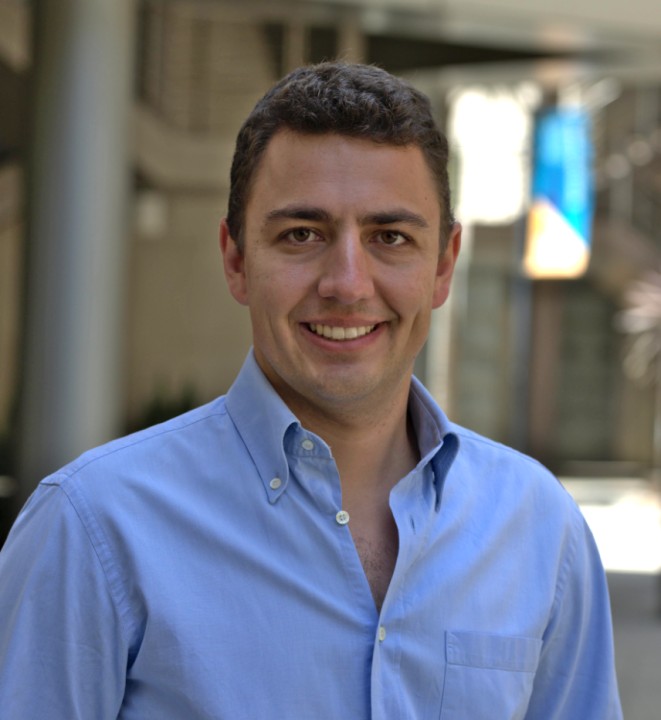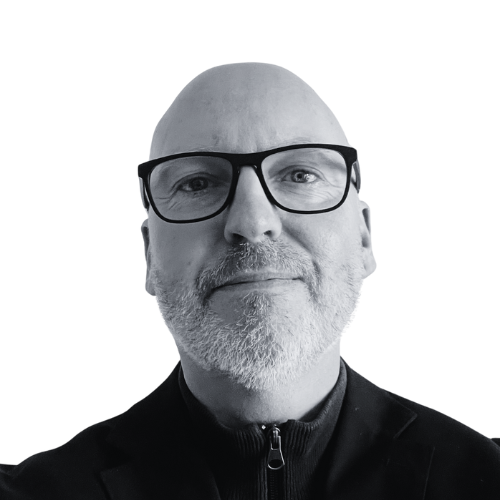Artificial Intelligence
Robotics
Robotics in 2025: if it moves, it can be automated
Reading time: 7 mins
There are lessons to be learned from pivoting a start-up
When Dominique Meyer started building camera systems for near-Earth object detection, he didn’t imagine the same technology might one day help prevent wildfires or pinpoint missing bolts on 80-year-old power lines. But that’s exactly what his company, Looq AI, is now doing – and the journey from astrophysics lab to infrastructure AI is as remarkable as the outcomes.
“I did my undergrad in physics, astrophysics actually,” Meyer explains. “That was my first taster of camera systems… then I went into robotics for camera design, specifically for self-driving vehicles.”
That work, he realised, had potential beyond autonomous cars. With the high costs and limitations of LIDAR systems, Meyer saw an opportunity.
“If we use cameras intelligently, we can make 3D sensing attainable and cheap.”
Looq AI’s pivot came during the COVID-19 pandemic, when demand in commercial real estate dropped and a new need emerged – exterior infrastructure mapping. Power lines, transmission towers, and vast energy networks became the new focus.
“Power lines are thin structures that are up in the air,” Meyer says. “With laser systems, you might get one or two returns… with cameras, we’ve got dozens of pixels representing one power line. We can detect rust, missing bolts, things LIDAR can’t.”

That granularity has profound knock-on effects.
“In a storm event, a structure is either still standing or not,” Meyer notes. “We help utilities understand risk and reduce liability.”
For engineering firms and surveyors, the benefits are immediate. “Traditionally, they’d spend 20 to 30 minutes on a single power pole,” adds Meyer. “With our tech, it’s minutes. We’re helping them save a lot of time while improving the data standard.”
More than just cost savings, Looq AI’s systems contribute to grid reliability, outage prevention, and even wildfire mitigation.
“There was a fire in East LA caused by power line vegetation encroachment. Looq could have solved that,” he says.
As AI adoption accelerates, concerns around regulation, ethics, and liability are increasing. Meyer acknowledges the need for an AI-driven business to take this seriously, and says Looq AI takes a clear stance on responsible AI deployment. Every AI deployment in the industry “needs a set of guardrails,” says Meyer, adding that “our AI won’t decide if a structure will fail. It flags potential issues for engineers to assess.”
This philosophy extends to development.
“We have a ban on using AI tools for software development,” says Meyer. “We want everything to be architected fundamentally by the smartest people.”
Meyer talks with confidence about the future, certainly around market potential but also Looq AI’s ability to scale. From utilities to oil and gas and underground infrastructure, the business is operating in a bullish space that is constantly looking to solve physical problems. Meyer is particularly passionate about digitising the physical world and what this could mean to infrastructure efficiencies and opportunities to improve services.
“The physical world is the least tracked item in the world,” says Meyer. “What if we just standardised the ability to document infrastructure every time it changes?”
That vision is driving the company’s next steps, to make mapping more affordable and accessible. For Meyer, it’s not about the tech for tech’s sake. It’s about real-world impact.
“We’re working on projects that could fundamentally improve a whole state’s worth of grid reliability. That’s what excites me.”
While Looq AI is redefining how we visualise infrastructure we can see, Bristol-based QLM Technology is helping visualise things we can’t see. Spun out of the University of Bristol and a member of its Quantum Technology Innovation Centre (QTIC), QLM uses quantum-enabled LiDAR to detect and visualise greenhouse gas emissions (particularly methane) from critical infrastructure such as pipelines, power stations, and landfills.
In a recent project led by National Grid, QLM helped detect invisible methane leaks across South Wales’s gas transmission network, without anyone digging a hole. Using its quantum-enabled LiDAR tech, QLM mounted cameras on drones and vehicles to scan for methane with high precision. What it found was game-changing – continuous emissions monitoring without disrupting infrastructure.
QLM’s platform uses single-photon detection and advanced optics to visualise greenhouse gases from power stations, pipelines and landfills. “This project demonstrates that QLM’s quantum gas cameras can be deployed to detect and quantify emissions remotely, enabling continuous, autonomous monitoring of key sites.” said CEO Murray Reed.
Backed by National Grid and Schlumberger, QLM, which raised Series-A funding of £12m in 2022, is part of a new wave of UK quantum start-ups applying cutting-edge science to pressing infrastructure challenges.

Working as a technology journalist and writer since 1989, Marc has written for a wide range of titles on technology, business, education, politics and sustainability, with work appearing in The Guardian, The Register, New Statesman, Computer Weekly and many more.
Quantum
Reading time: 10 mins
Quantum
Reading time: 10 mins
Quantum
Reading time: 11 mins
Robotics
Reading time: 1 mins
Quantum
Reading time: 3 mins